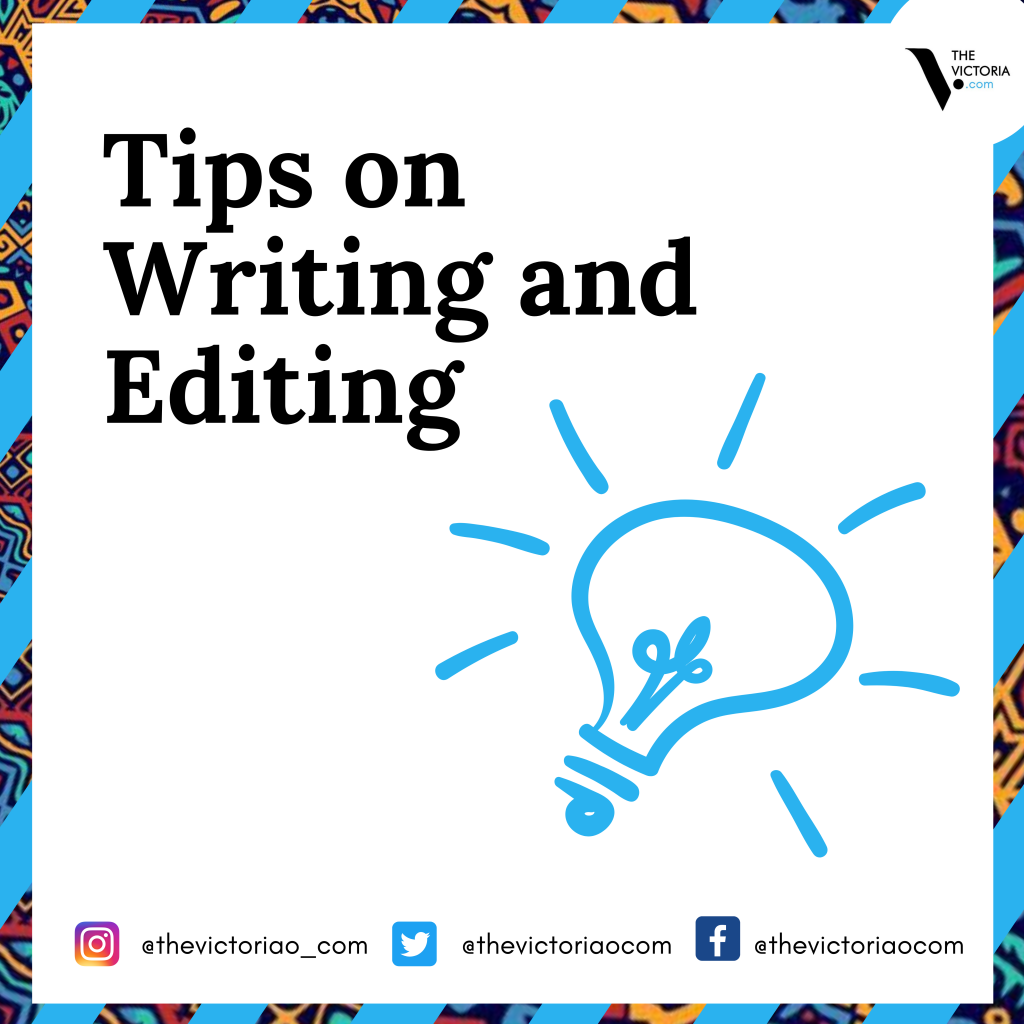Orighjigh Alôm

Writing is a process. This statement may come across as simply stating the obvious, but its significance becomes evident when placed side by side with a view of writing; as simply an act – the action of putting pen to paper, or typing words in a word processor.
Writing is, in truth, a series of actions that results in the creation and existence of an organic marriage, of coherent thought. The putting of pen to paper or typing is just one of several important actions that constitute the process of writing. Among others; like thinking through ideas, researching, producing drafts, etc., editing and proofreading are important and indispensable parts of what make up writing. While the terms are mostly used interchangeably, editing and proofreading differ, even if slightly. Granted, both are revision processes, nevertheless, their purposes set them apart.
Editing on one hand, takes care of: content –making sure a piece of writing contains the message the writer actually intends to send; structure –guaranteeing that the organisation of the writing, both internal and external is organic with the content; clarity –ensuring the words used, do justice to passing across the desired message clearly; and style –taking care of tone, voice, genderedness of language, etc.
Proofreading on the other hand, concerns itself with making sure a piece of writing is free of grammatical, spelling, and punctuation lapses. While editing may be considered a deeper level revision, proofreading deals with the surface level.
The first draft can be likened to a caging of the ideas fluttering in the writer’s head, so that they do not fly away. After this initial taming, there is a need for the writer to turn the draft into something that carries the markings of the hearth it was forged in, and yet hammered into a shape that is intelligible to those who will eventually consume it. The rush of creative inspiration sometimes inevitably causes certain lapses in the draft that can be righted in the revision processes of editing and proofreading. Every writer needs to be diligent in editing and proofreading whatever they write, be it a poem, a story, a play, an article, etc.
In a community of writers, there may also be much to gain from editing and proofreading one another’s writing. This is so because, while editing or proofreading their work, a writer may look at the text and yet not spot the mistakes, since they could be reading from their minds – what they intended to write – and not what actually made it to the draft. So the writer can read again and again and still miss some lapses. It is expected that this will not be the case, with the detachment expected from another reader.
There are also professional editors and proof-readers, whose job is to make good writing better, and even bad writing, good. Whether done by the writer, a friend, or a professional, editing and proofreading contribute greatly to how good or bad a piece of writing turns out to be.



I’m anticipating a pretty big problem when it’s a large piece you have to edit, like running into 50k words or more. Is there a way to break such large text to make it easier without bending off track and mixing up facts?
Hello Ebenezer, i advice you take editing a large article section by section. Editing gradually makes it precise and well done. Even large books and journals are edited line by line I.e each sentence counts. You can also share with an editor to keep a keen eye. I hope this was helpful.